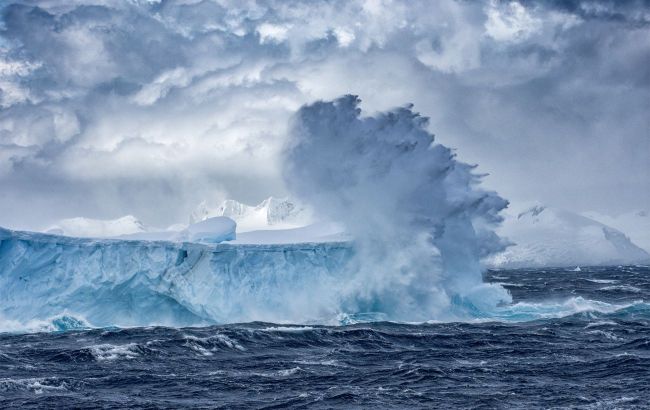Antarctica may be hit by severe storms: World threat possibility
 Why Antarctica is being hit by severe storms and how it will affect the world (photo: Getty Images)
Why Antarctica is being hit by severe storms and how it will affect the world (photo: Getty Images)
Antarctica is a land of glaciers and winds, but now scientists are warning of a new level of threat. Powerful storms can affect not only the region but also the global climate.
RBC-Ukraine explains why the number of powerful storms has increased in Antarctica and what threats they pose to the world.
The Southern Ocean has become turbulent and the number of storms around Antarctica is increasing due to the unrestrained loss of sea ice. Even researchers say that these are changes not seen in the last century.
Scientists at the UK's National Oceanographic Centre found that in the winter of 2023, Antarctica experienced an unprecedented concentration of sea ice in vast regions of the Weddell, Bellingshausen, and Ross Seas - it fell 80% below normal levels. This decline, according to researchers, has caused ripple effects throughout the continent's climate system.
Causes of increased storms
The main reason for the potential increase in storm activity in Antarctica is climate change. As global temperatures rise, glaciers are melting and air masses are changing their circulation over the continent. Warmer ocean waters contribute to the formation of cyclones that can cover the ice continent.
Scientists from the Institute of Climate Research report that the increase in the frequency of storms is directly related to the instability of atmospheric pressure in the Southern Ocean. These weather systems can spread strong winds of up to 200 km/h, accompanied by heavy precipitation and abnormal temperature fluctuations.
During the dark winter months, sea ice acts as a protective shield, limiting the transfer of heat from the relatively warmer ocean to the colder atmosphere. When the ice blanket is lost, heat is free to wander into the atmosphere. Thanks to this effect, scientists have seen that the loss of sea ice in Antarctica in 2023 doubled the amount of heat released into the atmosphere from the ocean in some areas.
Once in the atmosphere, the heat can cause storms by heating the air, causing it to rise rapidly, causing stronger winds, cloud formation, and turbulent weather systems.
Thus, it is estimated that ice loss in 2023 increased the frequency of storms in the most affected areas to seven days per month compared to the number observed between 1990 and 2015.
Climatologists from the National Center for Atmospheric Research in Colorado explain that for almost 40 years, the amount of ice in the sea around Antarctica has shown a small but significant increase, reaching a record high in 2014. But this was followed by a large loss of sea ice in 2016, and in 2023 the loss was unprecedented, with near-record low levels persisting into 2024.
They add that this decline, along with oceanic changes, suggests that the North Ocean may be undergoing changes not seen in the last century.
Danger to glaciers
Severe storms can cause glaciers to melt faster. Hurricane-force winds help to move warmer water from the oceans under glaciers, which accelerates their disintegration. This, in turn, can significantly increase global sea levels.
Storms in Antarctica tend to occur in coastal areas, as they are driven by weather systems that originate over the Southern Ocean.
The continent's edges are also where low-pressure weather systems form as a result of the collision between cold continental air and relatively warmer ocean air, increasing the likelihood of storms.
Antarctic storms, which are characterized by strong winds, extreme cold, and heavy snowfall, are usually more frequent and intense during the winter months.
Impact on the global climate
Antarctica plays a key role in regulating the Earth's temperature. If storms lead to significant ice melt, this could affect ocean currents such as the Gulf Stream. Changes in their behavior can cause weather anomalies around the world, from droughts in the tropics to heavy snowfall in Europe.
Interesting facts
- The strongest recorded storm in Antarctica reached wind speeds of over 300 km/h.
- The melting of Antarctic glaciers is already adding about 0.4 mm to the annual rise in ocean levels.
- Powerful Antarctic storms can cover an area larger than Europe.
Read about the 5 strangest findings that have impressed scientists in Antarctica the most.
Sources: World Meteorological Organization, National Snow and Ice Data Center, Nature Climate Change.

